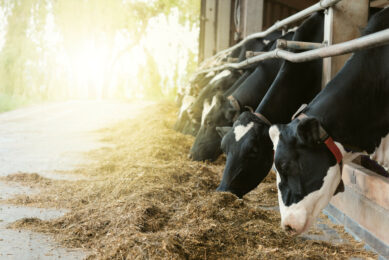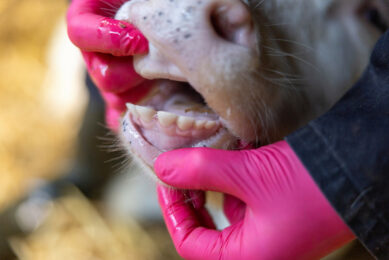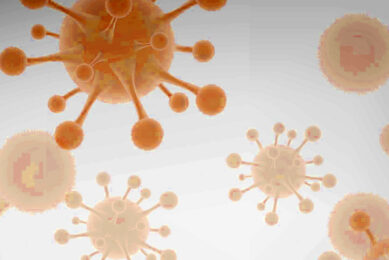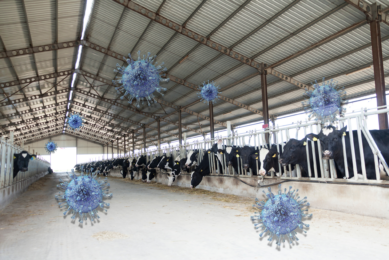Genetic progress in cattle: a global overview
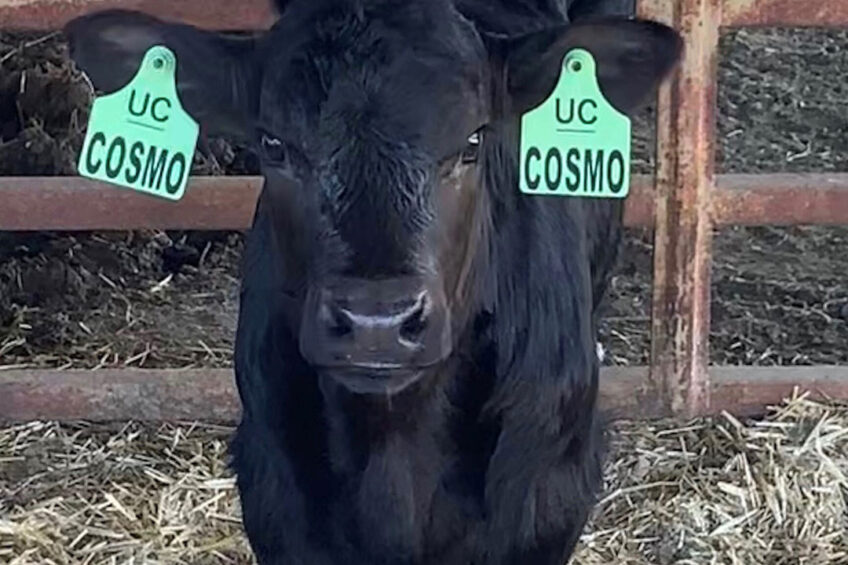
With the arrival of gene editing, there have been several recent developments in cattle genetics, with many more expected. Gene editing allows breeding programmes to introduce desired changes in a controlled way and at a more rapid pace than is possible using only conventional selection.
As Dr Alison van Eenennaam explains that gene editing involves guiding enzymatic DNA ‘scissors’ to do a targeted, specific cut at a predetermined DNA sequence. She is a geneticist at University of California at Davis who used gene editing a few years ago to create a bull calf (named Cosmo) that would be expected to produce more than 50% male offspring.
She explains: “Depending on how the cut is repaired, you can have inactivation of the gene that’s located at the target site, or an alteration in the functionality of that gene. Alternatively, there could also be DNA introduced at the cut site using a DNA repair template, containing sequence originating from that organism, another of its species, or from another species.”
Traits that involve a single gene, known as Mendelian or qualitative traits, are very suitable for gene editing as compared to traits that involve many genes (quantitative traits).
Genetic engineering, on the other hand, is a technique that is over 2 decades old where foreign genetic material is introduced into the genome using a DNA repair template in the absence of site-directed nucleases. The ‘GalSafe’ pigs (first created in 2002) and ‘AquAdvantage’ salmon (first created in 1989) became, in 2020, the first genetically-engineered (transgenic) farmed animals approved in the US for human consumption.
Heat tolerance
While heat tolerance is an overall performance parameter with many contributing traits (and therefore many genes), gene editing has so far been used in 2 ways relating to single genes that control traits associated with heat tolerance – coat colour and hair type.
One gene edit produces the so-called ‘slick coat’. These cows sport hair that’s short, sleek and sometimes glossy, which helps them dissipate heat better than cows without it. Holsteins with this trait have demonstrated lower internal (vaginal) temperatures and a lower respiration rate. In addition, in 2020, researchers at Mississippi State University and the University of Puerto Rico at Mayagüez published a paper concluding that under the hot and humid conditions of Puerto Rico, slick-coated Holsteins showed better reproductive performance.
While the ‘slick gene’ is also used in conventional breeding programmes in some parts of the world, geneticists at the Roslin Institute (University of Edinburgh in Scotland) have used a gene-editing technique to introduce it into newly-fertilised eggs from cows without the edit. They are also working with colleagues at the International Livestock Research Institute in Kenya with native cattle breeds there.
A US firm called Recombinetics has used gene editing to produce 2 beef calves with the slick coat trait. Dr Tad Sonstegard, president and CEO at Acceligen (owned by Recombinetics) says they have data on “significant” improvements in performance of these edited beef cattle under heat stress, but it’s not yet ready for publication.
Another way gene editing is being used to reduce heat stress in cattle is through lightening coat colour (dark colours absorb significantly more UV). A team of geneticists have achieved this in New Zealand, switching the black and white Holstein coat pattern to grey and white.
In a review paper about the potential of gene editing, Dr Peter J. Hansen of the University of Florida adds that a gene relating to heat tolerance has been identified in cattle that relates to lower production of heat shock proteins and less corresponding cell death.
In addition, in Australia, scientists at Agriculture Victoria have identified several genes strongly associated with heat tolerance. Australia has had genomic breeding values available for heat tolerance based on naturally occurring genomic variation since 2017.
Disease-related progress
According to experts like Van Eenennaam, disease resistance holds the greatest potential for gene editing. This is because most economically-important traits like growth rate and feed conversion in livestock are affected by a multitude of genes, and all because these traits have already been greatly advanced (some would even say to near maximum) through many generations of conventional breeding.
However, in some cases gene editing can prevent or reduce disease susceptibility because whilst most disease processes are complex, a targeted gene inactivation could interrupt it or prevent it from starting. One example is to inactivate a gene that results in production of a host cell surface protein to which a given pathogen attaches. This exact concept has been achieved in pigs relating to attachment of the virus causing Porcine Reproductive and Respiratory Syndrome (PRRS).
Scientists at Recombinetics, working in collaboration with 2 US universities and the US Department of Agriculture have also produced a gene-edited cow with reduced susceptibility to Bovine viral diarrhoea virus (BVDV). A gene edit substitution in the BVDV ‘binding domain’ gene on 1 chromosome results in “dramatically reduced susceptibility to infection, as measured by clinical signs and the lack of viral infection in white blood cells”.
Recombinetics has additionally produced ‘Thamani’ Holsteins that have the slick coat mutation in addition to targeted mutations in 2 candidate genes that are hypothesised to result in resistance to African Trypanosomiasis. “We have bred a small herd of Holstein animals with multiple edits that are still in a pre-regulatory evaluation phase of development,” says Sonstegard. “We will definitely seek approvals in tropical economies with small-holder dairy enterprises, since this was the target market for this breeding effort.”
One of Van Eenennaam’s grad students is also working on a gene edit for a cattle disease. “He is knocking out the gene in sheep first, as the disease affects both species, and if successful we will move onto trialling the edit in cattle, which are more expensive models on which to perform experiments,” she says.
Van Eenennaam adds that there is also published work from China documenting efforts to develop cattle that are resistant to tuberculosis, a globally-important zoonotic disease.
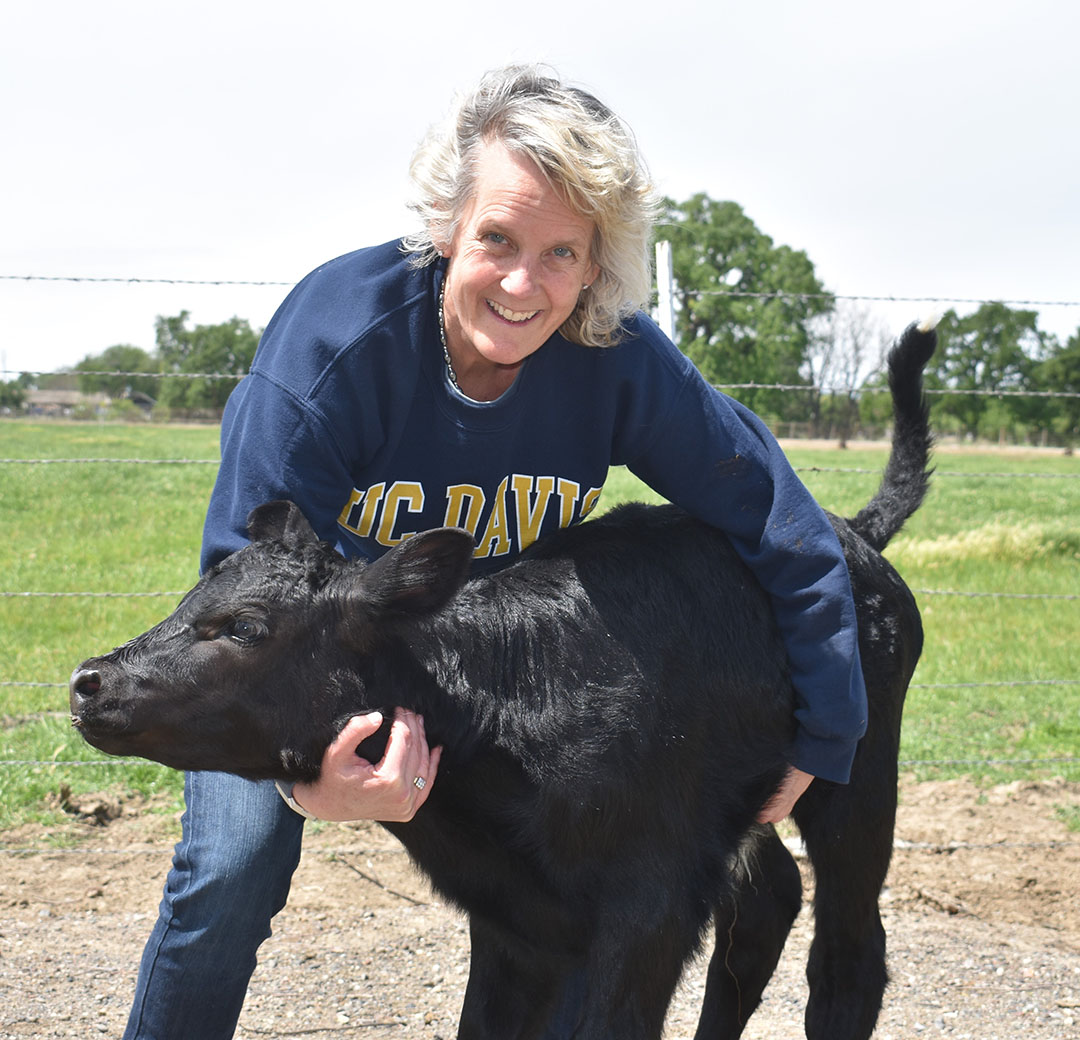
Developments around the world
Regarding Cosmo, the gene-edited calf that Van Eenennaam produced, she explains: “I had initial funding to produce the bull and collect his semen, but as of yet I don’t have funding to confirm if the gender ratio is skewed in his resulting offspring. This type of research is very expensive to undertake in the US, as all gene-edited animals are considered new animal drugs by the US Food and Drug Administration (FDA), and therefore they are not allowed to enter commerce. This means they have to be incinerated rather than sold at the end of an experiment, and it is difficult to secure the considerable funding required for such experiments.”
Another of her grad students has been working on knocking out a gene for germline development in cattle to produce infertile bulls and cows, into which elite germ lines from unrelated, genetically-superior animals could be introduced. She says this type of application could enable the rapid dissemination of elite genetics via natural service mating in extensive industries such as beef and sheep production.
A team of university and Recombinetics scientists also achieved a gene edit for polled (hornlessness) cattle some years ago. In a 2019 review paper, Van Eenennaam notes that dehorning is painful but protects animals and humans from injury, and much interest has been generated by use of editing to introduce the polled allele into dairy breeds. Breeding for polled cattle has typically not been a focus because of the low genetic merit and scarcity of polled dairy sires.
Some of the same scientists involved in the grey Holstein coat gene edit in New Zealand, along with colleagues from Recombinetics, have also used zygote-mediated genome editing to eliminate beta-lactoglobulin, a major allergen in cows’ milk.
Scientists in the Republic of Korea have produced cows with a double-muscling phenotype (an alteration of myostatin gene). Chinese scientists have also achieved this, says Van Eenennaam, in pigs, cattle and sheep. Likewise, Japanese scientists have produced myostatin knockouts in 2 fish species, which represent the first commercially-available gene-edited animal food product globally.
Regulatory frameworks stagnant
Gene editing regulations are a complex topic and many geneticists, including Van Eenennaam, consider them restrictive and illogical. Gene editing in the EU, for example, is regulated similarly to genetic engineering. Leadership in other jurisdictions such as Brazil, Australia and Argentina view gene editing akin to conventional breeding in situations where a gene is knocked out and no novel or foreign DNA is introduced.
The US regulations could be described as strange. There, gene editing of livestock is currently regulated by the FDA, which classifies any intentional genome alteration in an animal’s genome as a new animal drug, and regulatory frameworks used for drugs therefore apply.
In March 2022, the FDA gave its first ruling on gene-edited livestock to Recombinetics relating to their 2 beef calves with the slick coat mutation, an ‘enforcement discretion ruling’. This means that these calves and their products are excused from enforcement of existing new animal regulations because the ‘risk’ associated with them and their gene edit was considered low. This is not an approval or exemption from new animal drug regulations, says Van Eenennaam, but rather the products from these 2 animals were considered insufficiently risky to be a regulatory priority.
She suggests that the FDA could look at a tiered system of regulatory oversight based on levels of risk and that an update to the regulatory framework should be undertaken as soon as possible as required by Executive Order 14081 ‘Advancing Biotechnology and Biomanufacturing Innovation for a Sustainable, Safe, and Secure American Bioeconomy’.
“We have to remember there are huge opportunity costs associated with delaying genetic improvement in our food animal species,” she says. “In addition, the lack of global regulatory harmonisation around gene-edited animals and products from these animals, including semen and embryos, will pose challenges in relation to global trade, and aspects of traceability in both animal breeding and in the food chain.”
Going forward, as she explains in a recent paper co-authored by PhD candidate Maci L. Mueller, Van Eenennaam believes that in order for gene editing to be an effective tool for genetic change, it will need to seamlessly integrated into structured breeding programmes with a clear breeding objective, and ideally will be used to accelerate genetic gain by using it in conjunction with assisted-breeding technologies to simultaneously alter multiple components of the breeder’s equation.
To accomplish this, several gene-editing schemes have been modelled for livestock populations, and the most efficient schemes have relied heavily on widespread adoption of assisted reproductive technologies, especially commercial sector use of artificial insemination.
Desirable edits can easily be disseminated in dairy cattle production systems via artificial insemination of semen derived from elite, edited males. Van Eenennaam explains that “considering the currently limited adoption of artificial insemination in developing countries, and especially in extensive livestock production systems, novel breeding schemes, such as gene editing applied to produce surrogate sires carrying elite germline genetics, will likely be required to widely disseminate desired traits improved via edits.”
Join 13,000+ subscribers
Subscribe to our newsletter to stay updated about all the need-to-know content in the dairy sector, two times a week.



